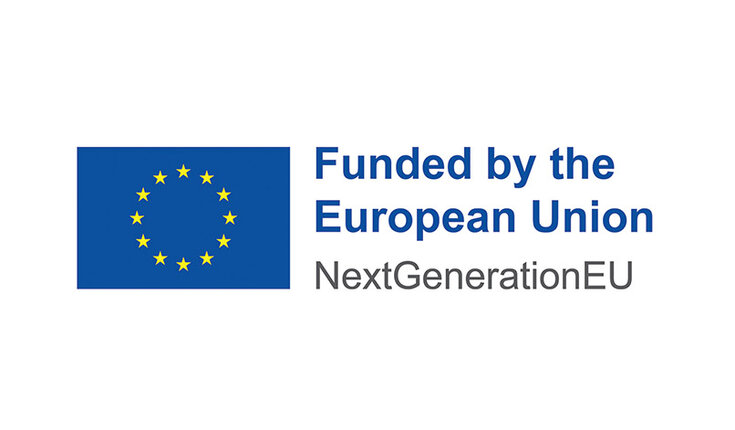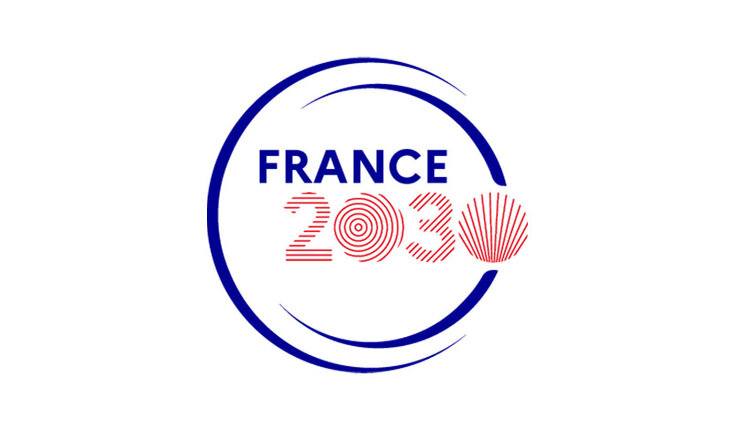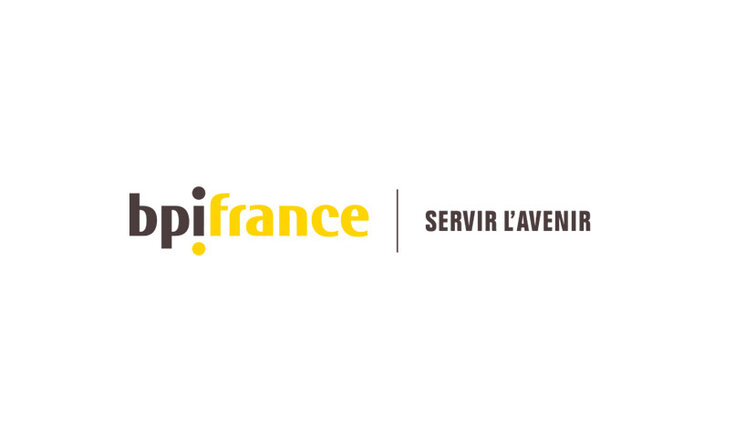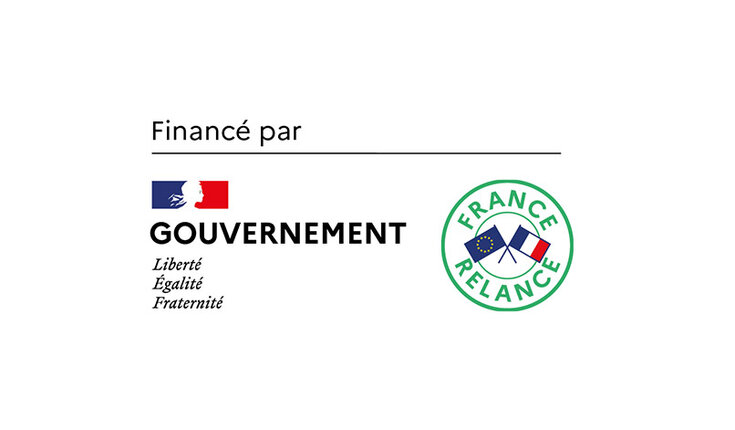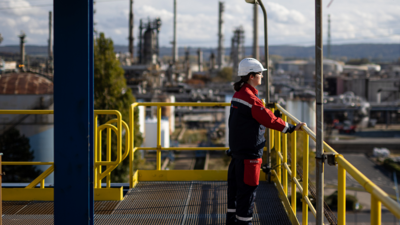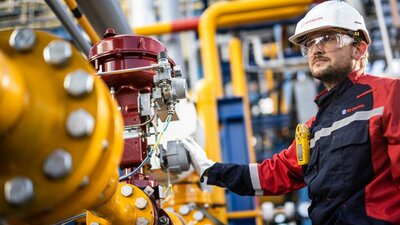Building the future of renewable hydrogen in Normand’Hy
Published on March 30, 2023
6 minutes
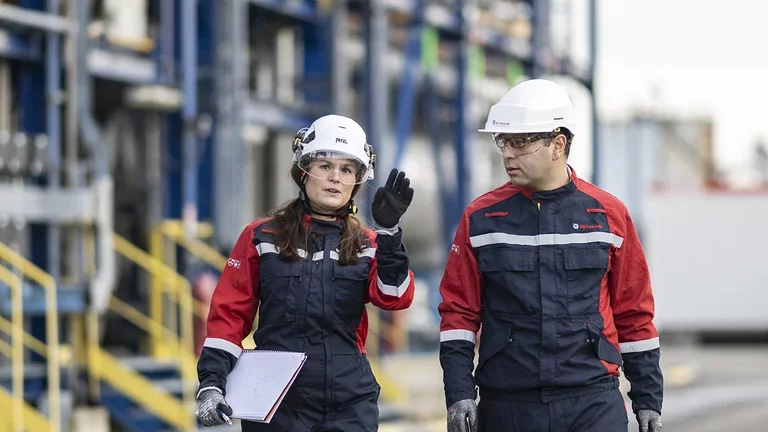
“This is where Air Liquide’s electrolyzer will be built,” indicates Rahim Salemkour, Project Director. “It is scheduled to be commissioned in 2025 and will be the largest in the world.” We are in Port-Jérôme, a small town in a region of Normandy, France, that is known for its industrial prowess.
In front of us, construction is underway at the site that will soon be home to the Group’s new renewable hydrogen production unit. “Air Liquide Normand’Hy is a large-scale electrolyzer with an initial capacity of 200 megawatts,” Rahim explains. This is equivalent to the average annual electricity consumption of more than 235,000 French households. “We will be able to produce up to 28,000 tons of hydrogen per year here through water electrolysis, which is a production process that uses electricity to ‘break’ purified water molecules in order to separate the hydrogen from the oxygen.”
Air Liquide Normand’Hy is the corner-stone of a project aimed at decarbonizing this industrial basin, which Air Liquide is implementing alongside other major industrial players in the region. The strong level of interest in the project means it has also garnered the backing of the French government as part of an Important Project of Common European Interest.1

“Normand’Hy’s major asset is its ability to produce competitive and carbon-free hydrogen on a large scale from renewable energy.
”
Rahim Salemkour
Project Director, Air Liquide
“To enable this kind of large-scale production of renewable hydrogen,” states Rahim, “the Group has entered a joint venture with Siemens Energy to develop large-capacity electrolyzers. This will allow us to pool our technology and expertise in proton-exchange membrane (PEM) electrolysis.” This Franco-German partnership is crucial for the development of a European hydrogen sector, which Air Liquide is spearheading.
Air Liquide has chosen to install this new electrolyzer in Port-Jérôme because it is a strategic location for the Group. “We have had a presence here since the 1970s and have rolled out many technologies in the region,” explains Mathieu Cavélius, Development Engineer. Over time, the Group has cemented its presence by developing a pipeline network and forging long-standing partnerships with major refiners in the region who use hydrogen to remove sulfur from fuel.
“It was clear that we would continue to roll out new technologies here,” explains Mathieu. Indeed, Port-Jérôme is already home to the largest steam methane reforming hydrogen production unit2 operated by Air Liquide in France, just a few kilometers from the Normand’Hy site.
Here, in 2015, the Group installed its Cryocap™ technology, which uses cryogenics to capture up to 98% of the CO₂ emitted during hydrogen production – a world first. Thanks to Cryocap™, Air Liquide has created new opportunities for capturing and reducing the carbon emissions of its own sites, as well as those of its customers. “Today, we are seeing great progress being made with the construction of this vast electrolyzer,” Rahim says. The main challenge lies in sourcing the electricity that powers it. “The electricity used will come from wind turbines and photovoltaic solar farms located near the site. This is what we mean when we talk about renewable hydrogen. There will be no CO₂ emissions produced during the production process,” said Rahim. As a result, up to 250,000 tons of CO₂ emissions per year will be prevented, the equivalent of the emissions of a French city with 25,000 inhabitants.3

“This pioneering project is a unique opportunity for industrial players in this area of Normandy, as well as for mobility – it will be a milestone.
”
Mathieu Cavélius
Business Developer, Air Liquide
Downstream, Air Liquide Normand’Hy will be connected to the regional industrial ecosystem. This will allow the hydrogen to be distributed directly to industries in the area. “We will continue to collaborate with refining, petrochemical and chemical companies that require hydrogen for their production. Today, with the climate challenges we are facing, it is a matter of gradually replacing the hydrogen we already supply with renewable hydrogen. This way, the carbon footprint of industrial players can be reduced,” said Mathieu. This hydrogen will also be used to decarbonize heavy transport, starting with heavy goods and industrial vehicles, followed by buses and commercial vehicles in the region.
Not only will the Air Liquide Normand’Hy site produce renewable hydrogen, the project as a whole has an environmental approach. Liliane Herculano, a Project Manager who deals with regulatory aspects, explained: “Due to its size, the project has been subjected to an environmental assessment. With the help of an environmental engineer, we carried out a year-long fauna and flora impact study, which represents a complete life cycle.” This allowed Air Liquide to adapt the project in terms of its design, construction and operation. “As a simple example, we decided to excavate the site between September and October 2022, as this is a time of year when animals are neither hibernating nor in their breeding period,” explained Liliane.

“With the help of an environmental engineer, we carried out a year-long fauna and flora impact study, which represents a complete life cycle.
”
Liliane Herculano
Project Manager, Air Liquide
Air Liquide has worked to preserve the environment and support the entire area surrounding the Normand’Hy site. This project will contribute to the economic development of the region and build up a unique expertise in hydrogen production. The Group is already committed to developing this expertise through the H2 Academy, a higher education training initiative that teaches younger generations in the area about new career paths within the hydrogen industry.
Air Liquide’s objective is to accelerate the development of renewable and low-carbon hydrogen on a global scale. To achieve this, it has decided to invest at least 8 billion euros in this area by 2035. The Normand’Hy project is this ambition brought to life!
